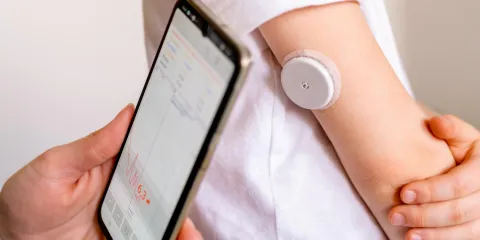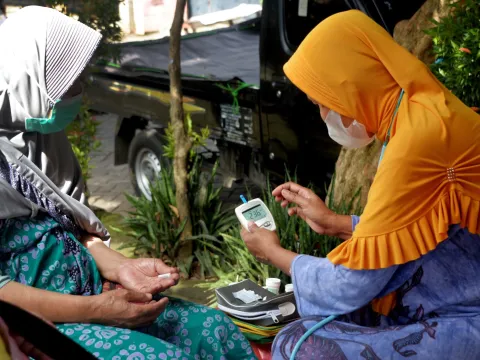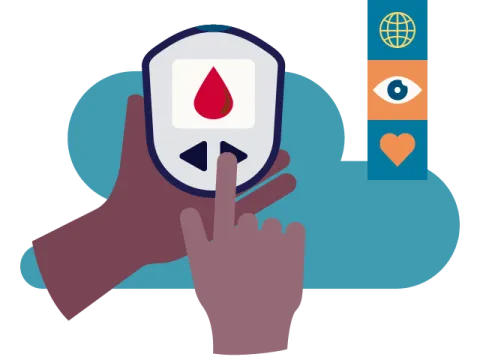NCD care at our fingertips: Digital tools can help turn back the diabetes epidemic

Diabetes is one of the most common noncommunicable diseases (NCDs) in the world and a very deadly one when not managed appropriately. Prevalence rates and mortality increase every year while access to the right information and quality care remains limited for many people, especially in low- and middle-income countries (LMICs). On this World Diabetes Day, the NCD Alliance launches its new report ‘Optimising the use of digital technologies for healthy societies and economies’, which provides on-the-ground case studies on how digital solutions can make a difference against NCDs such as diabetes.
Around one in ten people live with diabetes worldwide, 537 million in total. 90% of these people are living with type 2 diabetes, which is largely preventable by avoiding key risk factors like an unhealthy diet and lack of physical activity. However, especially in LMICs, accessing healthy foods and safe spaces for physical activity can be challenging; so can accessing healthcare for diabetes diagnosis and treatment.
Nearly half of all people living with diabetes do not know it because they have not been diagnosed, and among those who are diagnosed, only half are able to access the insulin they need to survive. In 2021 alone, 6.7 million people died from diabetes, mainly due to lack of timely and adequate treatment.
The prevalence and mortality of diabetes are increasingly rapidly, especially in LMICs, but access to information, diagnosis and care are not keeping up with increasing needs. Digital health has great potential to improve access to prevention, treatment and care for diabetes and other NCDs, especially when resources are limited and face-to-face interactions are not possible, as is the case in remote rural areas.
An excellent example is the International Diabetes Federation's online diabetes risk self-assessment tool, designed to predict a person's risk of developing type 2 diabetes over the next ten years. Other digital initiatives such as NCD Alliance's NCD Diaries allow people living with NCDs such as diabetes to share their stories online and help others learn about the disease through first-hand accounts like that of Mariana Gómez or Snehal Nandagawli.
The latest report from the NCD Alliance, Optimising the use of digital technologies for healthy societies and economies, contains a series of case studies on the use of such solutions to strengthen NCD services, including the Diabetes Compass.
The Diabetes Compass is an initiative of the World Diabetes Foundation to improve diabetes care at the primary care level through technology in Malawi, Sri Lanka and Tanzania. As the report shows, the programme addresses some of the most problematic aspects of diabetes care in these countries, such as the lack of exchange and collection of diabetes-specific information, barriers to early detection and gaps in the training of health professionals.
What stands out most about this case study, however, is its aspiration to create an integrated ecosystem of digital solutions to diabetes. Low- and middle-income countries often face a fragmented digital health landscape in which various products, services and processes operate in isolation from each other. The Diabetes Compass uses a needs-based approach that puts people and their problems before solutions. By collaborating with local partners, using open-source standards, and reusing and improving existing technologies, the initiative ensures that its efforts are context-specific, cost-effective and enduring.
Other countries should take advantage of the possibilities offered by digital health technologies to advance progress towards Universal Health Coverage (UHC). The Diabetes Compass initiative shows that such solutions can help solve many of the issues associated with diabetes when they are deployed correctly and take into account the needs of communities and their context. What better way to use technology than to put it at the service of people and their health?








